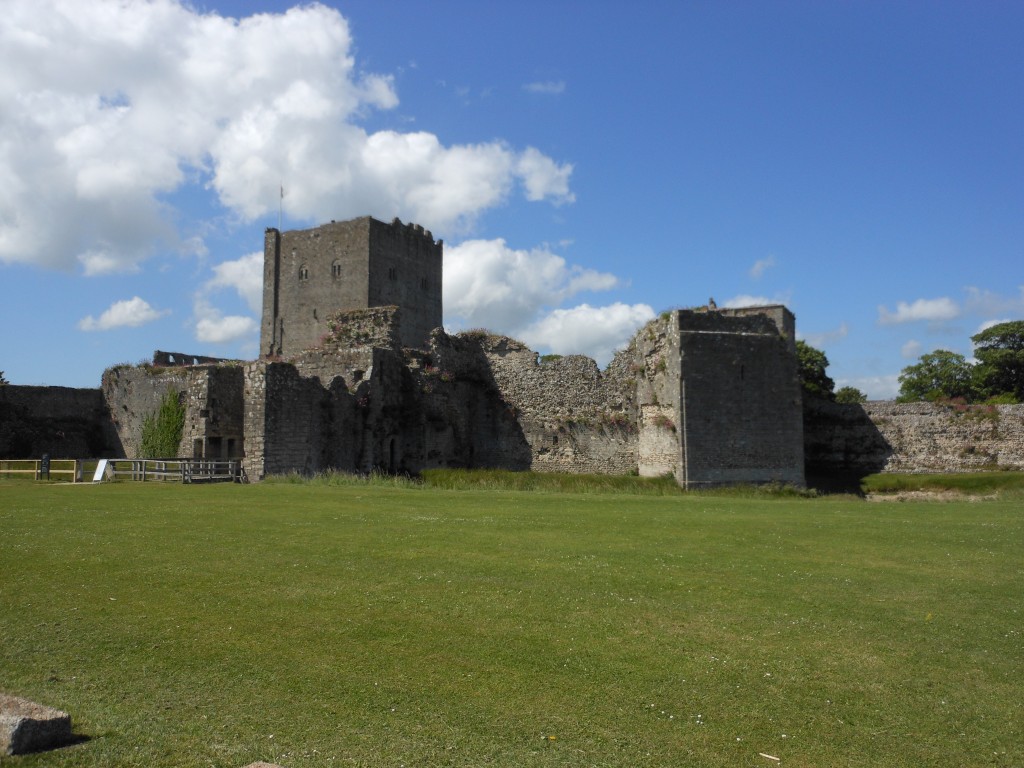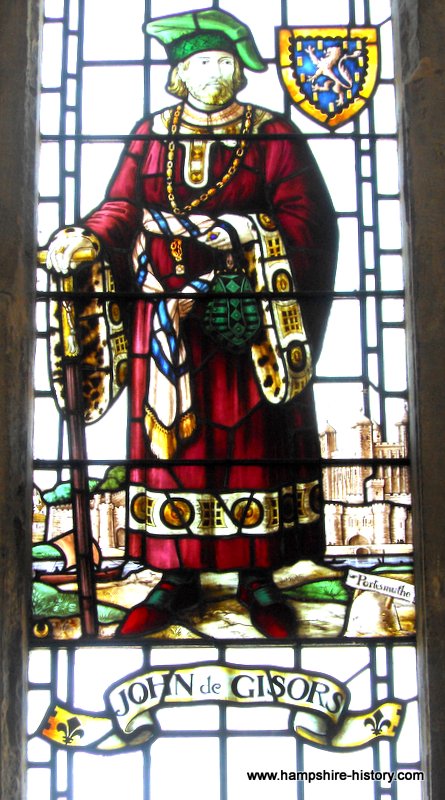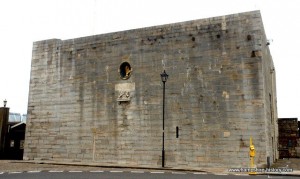Portsmouth and it’s port have been the site of transient settlement for at least a thousand years. The fortunes of the settlement seem to have waxed and waned, depending on the invasion threat level.
The population of Portsmouth has always been historically small and nucleated, kept within the confines of the port defenses.
In the Domesday Book there is no mention of Portsmouth itself but areas that would become part of what we now know as Portsmouth were included. At this time it is estimated the Portsmouth area had a population not greater than two or three hundred. While in Portsea there was a small church prior to 1166, Portsmouth’s first real church came into being in 1181 when a chapel dedicated to Thomas Becket was built by Augustinian monks and run by the monks of Southwick Priory.
So why was the area of Portsmouth considered to be a suitable place to establish a port? What virtues and constraints did it offer?
- Portsea Island was a fairly unprepossessing environment. The land was subject to frequent inundations from the sea.
- Salty marshlands made agriculture extremely difficult and so it easy to see why the Romans chose to develop the area of Porchester, which was less susceptible to sea level change than Portsea.
- It is thought that even before the Romans, the Britons established some sort of settlement in the area of Porchester and named it ‘Caer – Peris’
- The Romans quickly recognized the importance of Porchester and began to fortify it, the name changed to ‘Portus Adurni’
When the Romans left, Porchester continued to be important to the defence of Hampshire. In 897AD, Alfred the Great needed to mount some sort of defence against the Danes and built a large navy, which he gathered in the Solent to defeat the Danes.
So whilst Porchester continued to be a functional settlement, what was happening on Portsea Island?
- Saxon farmers had established a handful of tiny settlements on Portsea Island.
- In the late Saxon, early Norman period, there were three distinct hamlets, Buckland, Copenore, and Froddington.
- These tiny settlements were beyond the floodplain, although still susceptible to the high seasonal tides. One can imagine that moving around on this boggy ground was a problem but clearly the possibility for settlement had been established.
- The Normans were quite possibly the first to see the scope of Portsea Island and prepared to invest some time and thought into the process.
- The land on which the dockyard sits, is washed by the waters of the harbour on two sides, the west and the north. Consequently it affords great facilities for repairing, launching and building ships.
- Strategically the land is placed in the middle of the south coast of England and therefore capable of defending to the east and west in equal measure.
- The chalk ridge could provide the stone for building the land up and reclaiming some lands from the marshes.
The opportunity to develop the island, was seized by a Norman knight, Jean de Gisors.
He was a landowner and entrepeuner who saw the possibility for a trading settlement. He bought the Buckland settlement and estate from the de Port family,an important and influential Hampshire family.
What is interesting, is that, as a newly built settlement with a key purpose, de Gisors laid out the town on a grid system, which would enable him to plan and strategically place the buildings.
The French were never far from Portsmouth however and attack after attack left the new settlement in ashes time and time again. The Channel would become the theatre of a long struggle between the two nations.
Some sort of command of the channel would become necessary to allow England’s armies to be moved safely back and forth.
Portsmouth’s First Royal Charter
On 2 May 1194, Portsmouth received it’s first royal charter, possibly from Richard I, who was in the harbour at the time. Richard I rated Portsmouth as a strategically important place and had gathered with a fleet of more than one hundred ships and thousands of men, waiting for the weather to improve sufficiently to cross the Channel to Normandy.
- In 1114, Henry I embarked at Portsmouth for Normandy. He built the Norman castle on the site of the old Roman camp at Porchester and this added materially to the importance of the harbour.
- The loss of Normandy in 1204 by King John was to become a very important event, England needed to develop a maritime power and John recognized the important role of Portsmouth in achieving this goal.
- In 1221 Henry III assembled a massive army in Portsmouth but when the fleet wasn’t in port, it became very vulnerable to attack.
- The hundred years war saw an escalation in these attacks but still the defenses were not improved.
- By the C15th, things had moved forward and towers were built either side of the harbour entrance, wooden at first but later stone.
The problem with Portsmouth
Portsmouth though, still had a fundamental problem. It was distant from the seat of government in London and means of communication between the two were poor. The main road between London and Portsmouth was very dangerous, alive with robbers and worse, heavy clays creating quagmires in wet conditions and two ridges to cross. The Thames ports were far easier to do business with.
- The slow growth of the town was a serious problem. It could supply little or nothing to the dockyard and nearly all requisites other than timber had to be forwarded from London with all the costs this incurred.
- On the plus side the extensive forests, the New Forest, Forest of Bere and Alice Holt could provide timber to build ships and the Sussex foundries provided the iron.
- King Henry VIII seized upon this opportunity and saw Portsmouth as the most strategically important port in the country.
- Henry played a major part in the foundation of a permanent Royal Navy which operated out of Portsmouth. He paid for ships to be built at Portsmouth, including the Mary Rose, they operated out of Portsmouth and were provisioned from Southampton.
- The King paid for more fortifications including Southsea Castle.
Many of the soldiery that joined during Henry’s and his father’s reign, were from Portsmouth and for the first time there was a substantial growth in it’s population.
In the centuries that followed, timber reserves were depleted and the importance of Portsmouth rose and fell depending on England’s state of war with the Spanish and the French but the Royal Navy had picked Portsmouth as it’s home and that sealed it’s position to the present day, as dockyard to the Royal Navy.



